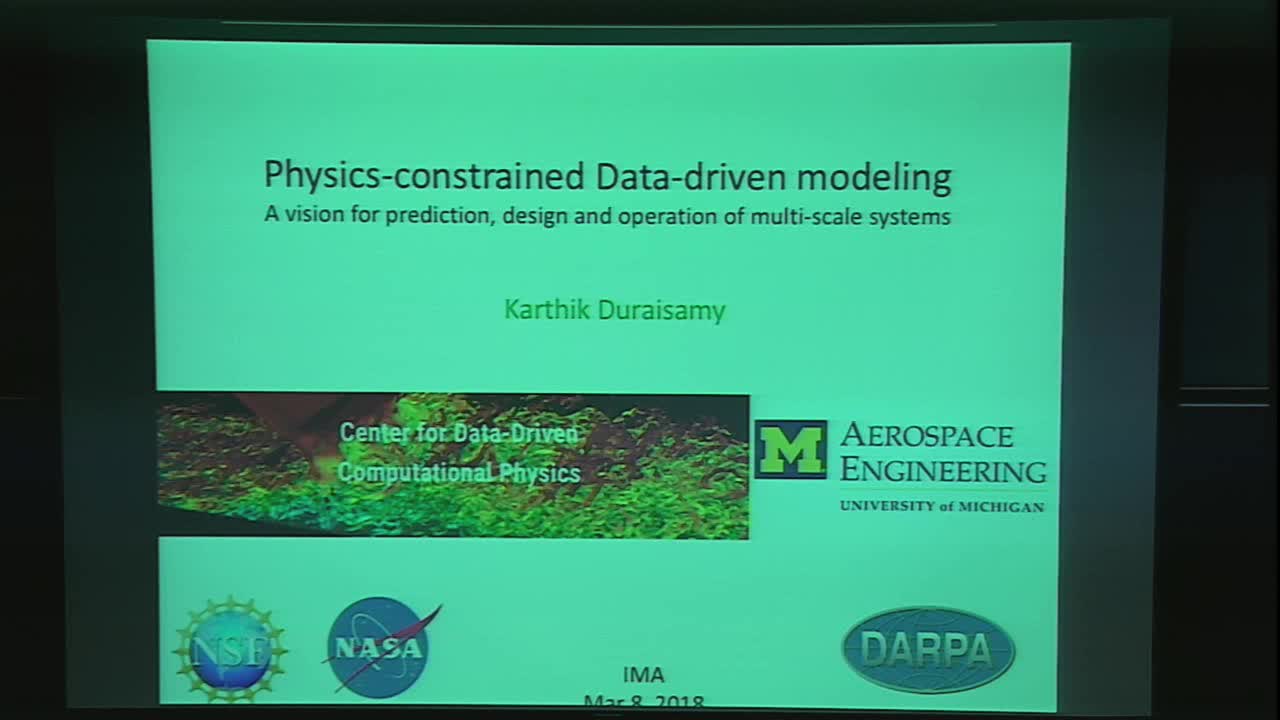Physics-Constrained Data-Driven Modeling : A Vision for Prediction, Design and Operation of Complex Systems
Presenter
March 8, 2018
Keywords:
- Physics-constrained Machine learning, Robust design, model form uncertainty quantification, digital twins
Abstract
Machine learning-driven models have achieved spectacular success in commercial applications such as language translation, speech and face recognition and bioinformatics. The natural question to ask then is: Can we bypass the traditional ways of intuition/hypothesis-driven model creation and instead use data to generate predictions of complex physics? This talk will begin with a discussion of the challenges of extending direct machine learning techniques to the prediction of physical phenomena. A pragmatic solution is to blend data and machine learning models with existing physics-based models and enforce known physical constraints. Thus, one can improve model robustness and consistency with physical laws and address gaps in data. Examples of this hybrid paradigm, which we refer to as Physics-Constrained Data-Driven Modeling (PCDD) will be highlighted in the prediction of turbulent flows and materials behavior. In an industrial design setting, it is typical to have legacy physics-based models, benchmark datasets and domain expertise. The PCCD technique is demonstrated to naturally leverage various sources of information and be a useful tool in robust design.
The last part of the talk will explore the prospects of using PCCD-type techniques as part of a digital twin framework, with the objective of dynamically altering device characteristics to adapt to emerging operational scenarios.
